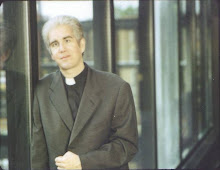Is it okay for the preacher to use stories from their personal and family lives as sermon illustrations? The short answer is that opinions vary. Proponents of the preacher as sermon illustration remind us that Saint Paul says, “Brothers and sisters, join in imitating me, and observe those who live according to the example you have in us” (Phil 3:17). They contend that what is true for Paul is equally valid for those whom Christ through the Church calls to preach. Moreover, research indicates that many people are engaged by sermons in which preachers refer to their own questions, struggles, insights, and joys. These listeners are drawn to sermons in which preachers reflect theologically on the meaning of their own experience as a lens through which to help the congregation encounter the gospel (Mary Alice Mulligan and Ronald Allen, Make the Word Come Alive: Lessons from Laity (St Louis: Chalice Press, 2005), p. 25.). References to the preacher’s own life can illustrate the point of the sermon, help establish identification between preacher and people, stir the people emotionally, and serve as an authority for the claims of the sermon. Thus, some listeners suggest that preachers share their vulnerabilities with the congregations, seldom make themselves heroes or sheroes of stories, and bring their experiences into dialogue with other sources of theological authority, such as Scripture (Ibid.).
On the other hand, some homileticans make a hard and fast rule: “Never use yourself as illustration.” They contend that people remember the story rather than the point, may identify negatively with the preacher, might be stirred emotionally in ways other than what the preacher desires, and may give the preacher less authority. Moreover, people may fear they will become “sermon illustrations” themselves. Opponents of the preacher as sermon illustration warn that the use of personal and familial material rather than material from the shared life of the congregation may signal that the preacher has no relation to the people, and does not desire one.
Somewhere in the middle, many preacher and teachers of preaching attempt to negotiate the tension by coming up with rules to guide them, including using personal illustrations no more than three times in the same congregation. Some say never be the hero; others say never be the dunce. I like the rule, “Never put yourself in the place of Jesus.”
I find that, as in all rules about preaching, they work until they don’t. Someone can always name a preacher or a sermon that broke the rule and the sermon was a smashing success—bringing people to faith, saving the congregation, or transforming the neighborhood. So rather than providing rules to follow, here are six variables to weigh.
First, David Buttrick warns of “split focus.” According to Buttrick, by speaking of yourself, the congregation will focus on you and the intended subject matter will not form in congregational consciousness in a satisfactory way. Preachers often use personal narratives to build relationship and demonstrate their humanity to create empathy. Buttrick contends there are better ways of building relationship (like visiting), and that our humanness will be all too evident to congregants without our putting it on display (David Buttrick, Homiletic Moves and Structures (Minneapolis: Augsburg Fortress, 1887), pp. 94-95).
Second, research indicates that oeople want to know about their preacher—to a point. Parishioners want limits on both the content of personal material and the frequency of its use. They are clear that the pulpit is not a confessional; they do not want to hear about their preacher’s ethically inappropriate activities and behaviors. And we should only share our doubts when we have come to terms with them.
Third, preachers should weigh whether the personal material points to itself and the preacher or points beyond itself to Scripture, the gospel, Jesus and God. This can be difficult for the preacher to distinguish, since we all want to come across as a faithful Christian, visionary leader, and likable, even cool, person. So preacher might well to vet their personal material they want to use with someone they trust.
Fourth, preachers should weigh the unanticipated consequences of the stories they tell. The preacher people scratching their heads when he shared his frustration over his airline’s Admiral’s Club running out of shrimp the last time he flew.
Fifth, while some people want to use the preacher’s experience as a model for growth in the journey of faith, I need to weigh how much I want to be that model or example. Preachers cannot point to themselves in the pulpit and say their lives are their own out of the pulpit. Is your life so spiritually profound as to be exemplary? Mie is not. So if I talk about the ordinary things of my life—work and family, for example, without ever mentioning myself, my stories become our stories.
Sixth, how will others who share the story feel about you telling it? Their comes a point in our children’s lives, for example, when they are done providing sermon illustrations. So, always ask permission before using people’s stories in sermons, and never embarrass them.
I am mindful that not everything that happens to us is meant to be a sermon illustration. I pray that you have a pastor who hears your confessions and doubts, and special beloved ones to tell your best stories to.

No comments:
Post a Comment